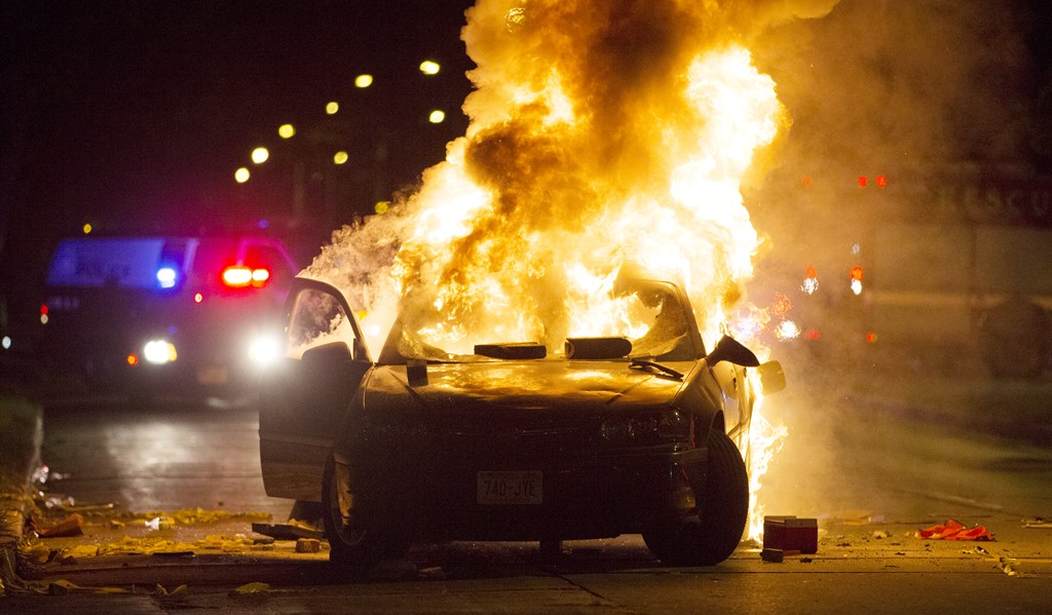When Hurricane Idalia made its way through Florida last year, firefighters braced themselves to deal with a challenge entirely different from the issues they typically face with storm clean-up. Electric vehicles whose batteries become damaged from saltwater during a storm surge catch on fire—a phenomenon that can occur days or even weeks after the initial damage. Nearly two dozen EVs ignited after Hurricane Ian, so officials in the state did their best to warn residents to move them to higher grounds. After all, it’s not just a threat to the vehicle. A home that survived Ian ended up burning to the ground later from an EV parked in the garage that caught on fire, which affected the neighbor’s house, too.
These fires are notoriously difficult to put out, sometimes requiring 20,000 gallons of water to extinguish, and burn toxic chemicals as they burn, posing serious threats to the health and safety of first responders.
On Thursday, lawmakers on the Subcommittee on Investigations and Oversight addressed some of these challenges, with Chairman Jay Obernolte (R-CA) noting that there are no federal guidelines addressing how first responders should deal with the threat and EV makers have not provided uniform solutions, either. Some manufacturers say to just remove the vehicle and let it burn out, but in states like California, doing so could trigger a massive wildfire.
EV fires are fundamentally different from traditional internal combustion engine fires, and they present new dangers that our first responders need to be prepared for. EV fires burn at temperatures far hotter than regular vehicle fires; they produce copious amounts of toxic chemical gases, expose firefighters to the risk of electrocution, and are often inextinguishable for hours or days with the threat of reignition due to thermal runaway.
When an EV either experiences an incident due to a manufacturing defect or is damaged in an accident, the battery that powers the vehicle often has a remaining charge. This stranded energy provides the fuel to keep a battery burning for hours regardless of how much water is poured on it in an attempt to extinguish it.
Unfortunately, the federal government has been deficient in providing guidance and resources to our firefighters and first responders in dealing with this threat. There is currently no uniform guidance on how to address EV fires or protect firefighters from the unique hazards they present, leaving many fire departments to formulate ad hoc solutions.
For example, firefighters in Wakefield, Massachusetts had to dump 20,000 gallons of water over two hours to put out an EV fire. Firefighters in Sacramento, California were forced to submerge an EV in a makeshift pond because the vehicle kept reigniting.
Vehicle manufacturers themselves have not provided uniform solutions to this problem, with some manufacturers recommending that EVs be removed from the road and left to burn themselves out. As you can imagine, in my home state of California, where wildfires are always an ever-present danger, letting an EV just burn itself out is not an option.
Witness Dan Munsey, fire chief of the San Bernardino County Fire Department, called for prevention measures through engineering controls like battery management systems and thermal management systems; an education campaign to inform owners about proper usage and care; offering economic incentives to encourage research and safety upgrades; and new laws and regulations to ensure vehicle safety.
"Lithium-ion batteries are an important part of our future and we are several years behind in our fire services ability to educate, regulate, and respond to potential emergencies involving lithium-ion batteries." - @SBCFireChief
— House Science Committee (@housescience) February 29, 2024
Dr. Judy Jeevarajan, vice president and executive director of the Electrochemical Safety Research Institute at UL Research Institutes, similarly called for further research and development of EV designs that ease fire suppression and “finding methods to remediate possibly toxic chemicals in suppressant runoff.”
Recommended
Jeevarajan of @UL_Standards on "the potential for lithium-ion cells to undergo catastrophic failures that can generate fire and toxic gases when they fail to be designed, manufactured, charged, or used correctly." pic.twitter.com/GpxDWfI67J
— House Science Committee (@housescience) February 29, 2024
“Fire fighters and first responders have expressed concerns that they are unable to remove all traces of toxic and corrosive chemicals such as hydrogen fluoride (HF) and hydrogen cyanide (HCN) from their suits even after washing them,” Jeevarajan noted, adding that further research is needed for better protective gear and respirators.
Munsey also emphasized the threat to firefighters' health.
“Frankly, over my career, I've seen way too many firefighters die from cancer. Our cancer rate is higher than the civilian population. The electric vehicle lithium ion batteries pose a challenge to firefighters' health,” he said.
Addressing these issues will be extremely costly, according to the witnesses.
Munsey said that the PPE and other gear firefighters wear costs between $5,000 and $10,000 per ensemble. His department requires their firefighters to launder the PPE themselves, but with EV fires, the whole ensemble has to be taken out of service and sent to the manufacturer for specialized cleaning service. About 4% of the ensemble sent out for cleaning fail the cleaning service, he said, and the department has to buy new PPE.
One way firefighters control the fire and prevent the gasses from spreading, Munsey explained, is to cover them with blankets that cost $3,000 to $5,000 each.
He told of a department that responded to an EV that caught fire in a Denver-area home garage. The responders used the blanket to contain the smoke and gasses, and then towed the vehicle to a tow yard, where they dug a pit, filled it with water, and immersed the vehicle in the pool.
Munsey said the San Bernardino Fire Department is looking to buy a heavy wrecker, which is a large towing vehicle, and that will cost about $1.2. This will allow them to lift and move burning EVs. They’re also looking at investing in a “dip tank” on a trailer that will allow them to submerge burning EVs.
The cost of the training that firefighters need to know how to deal with the fires is going to be about $2,500 for each firefighter, Munsey said. With 1.1 million firefighters nationwide, that will cost about $3 billion.
Rep. Rich McCormick, R-Ga., citing data from the National Volunteer Fire Council, said of the approximately 29,452 fire departments throughout the country, 24,208 are entirely or mostly made up of volunteer firefighters.
“Given that, do you think that there's any way to prepare these guys for the future challenges of fighting EV fires?” McCormick asked, especially if EV adoption grows to 130 million by 2030.
Munsey said with enough time and funding, it is possible, but it would require billions in funding. (Just the News)

























